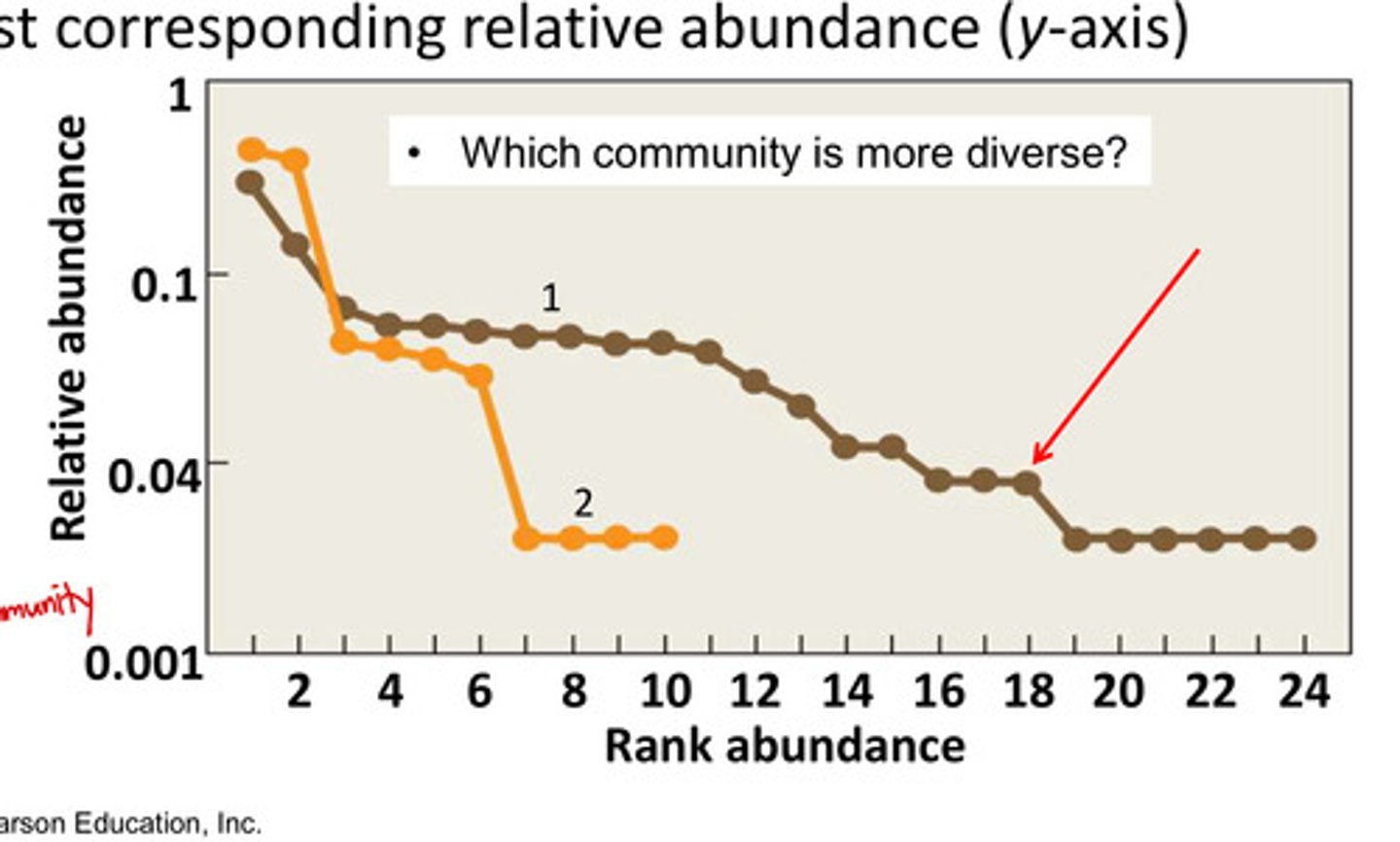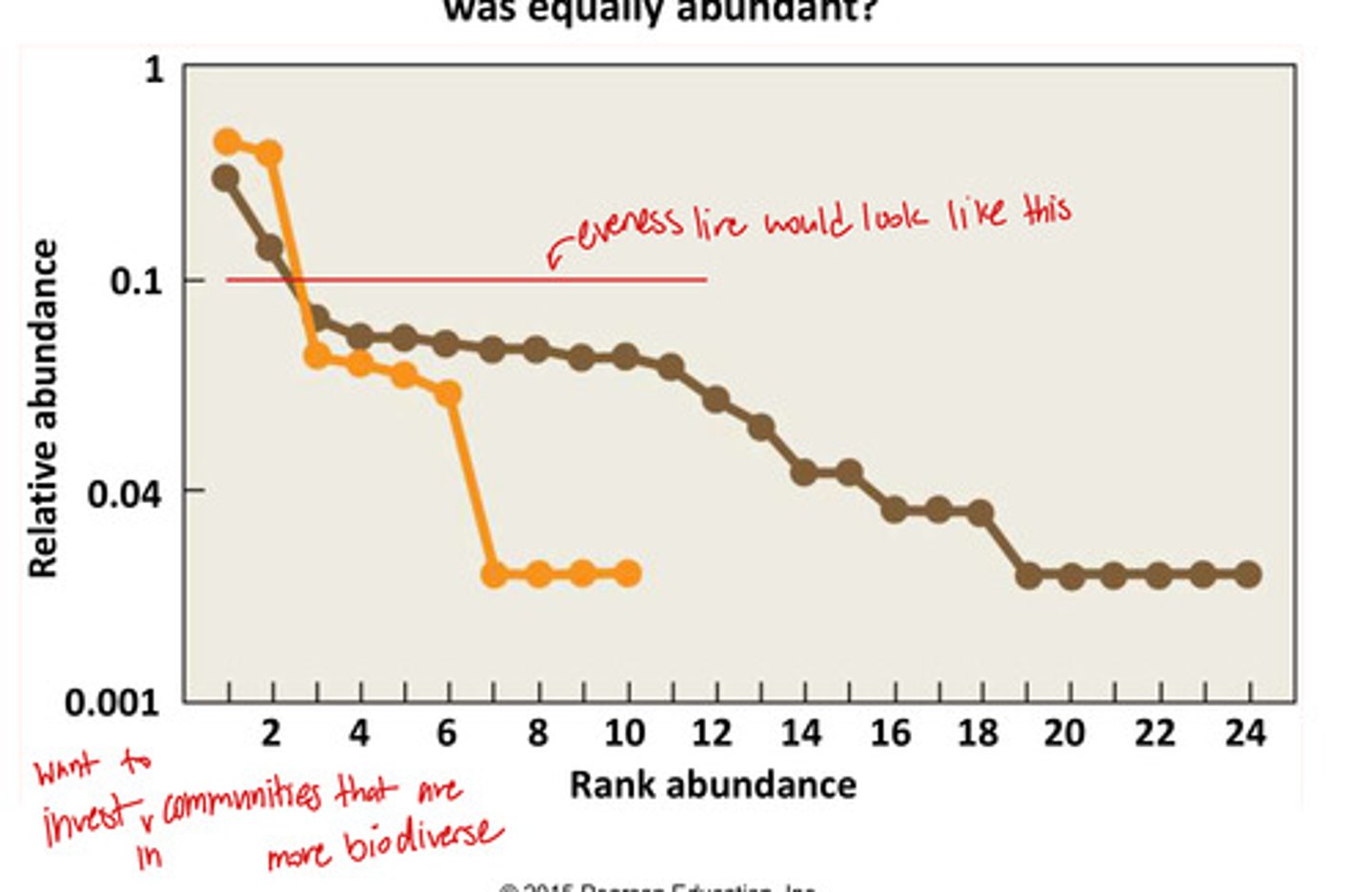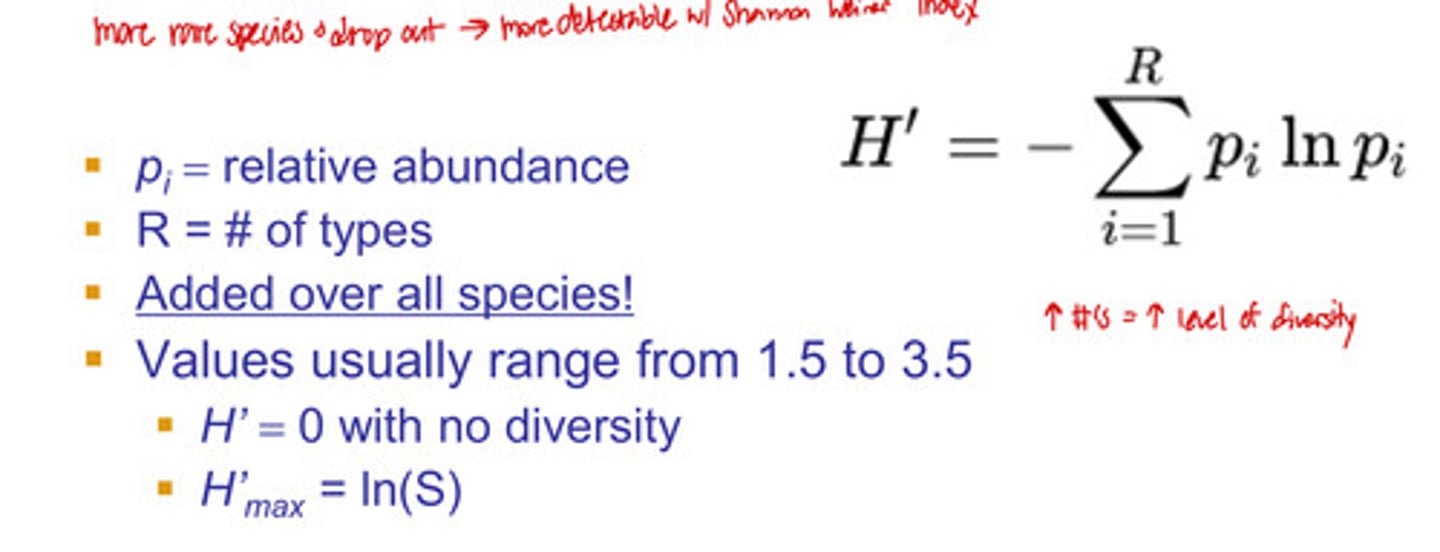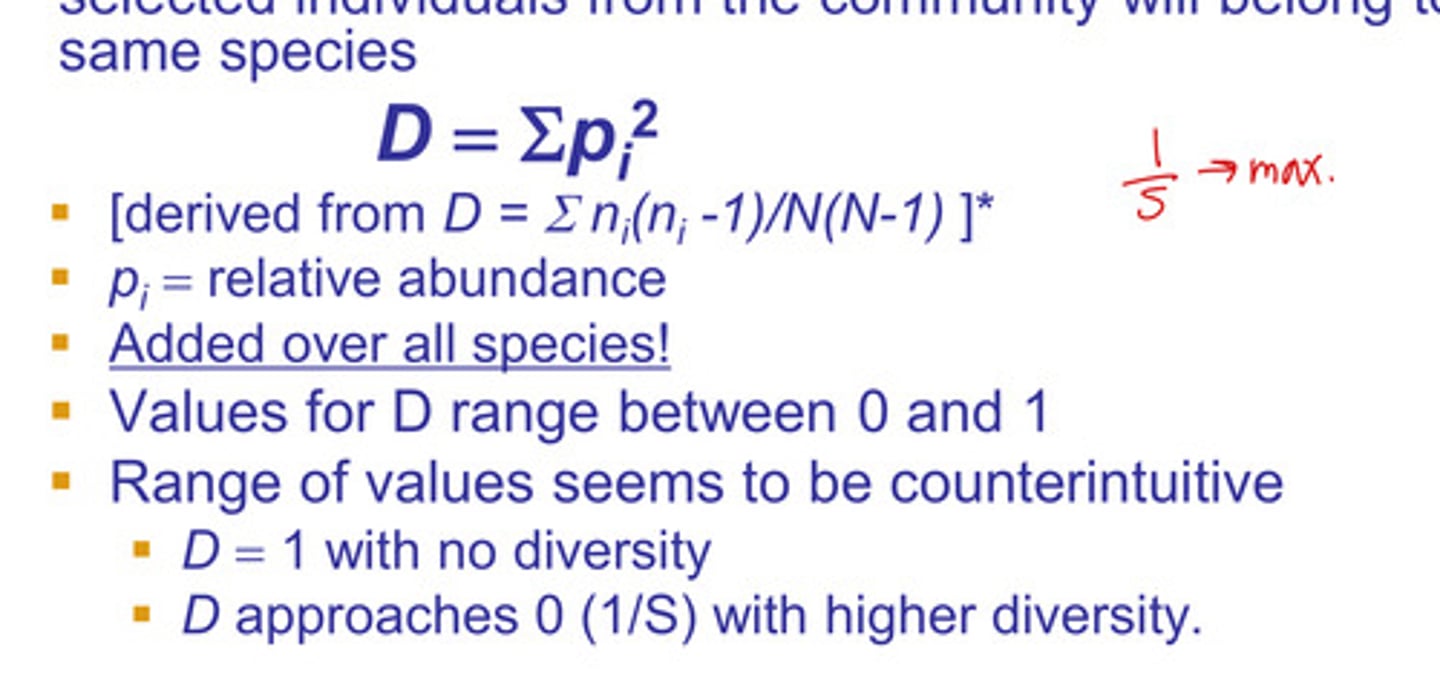lecture 6/7: community and landscape ecology
1/36
There's no tags or description
Looks like no tags are added yet.
Name | Mastery | Learn | Test | Matching | Spaced |
|---|
No study sessions yet.
37 Terms
community
a group of species that occupy an area and interact
- all of the species within that area
- spatial-place with a defined boundary
attributes of a community
- species interactions
- species richness
- species evenness
- relative abundance of species
- dominance
- physical structure (usually plant forms)
neutral interaction (0/0)
neither species affects the other (difficult to prove); is sometimes also used to mean no interaction
mutualism interaction (+/+)
both species mutually benefit from the interaction
- mutualisms are dynamics
- mutualists are not trying to be "nice" but instead each individual is trying to maximize benefit and some species "cheat"
commensalism (+/0)
when one species benefits and the other is unaffected
competition (-/-)
- can be interspecific (between different species)
- can be intraspecific (between the same species)
- is always density dependent
- competition for limited resources
amensalism (-/0)
- detrimental to one species while the other is unaffected
- a form of asymmetric competition, such as when a taller plant species shades a shorter plant species
antagonism (+/-)
one species benefits at the expense of the other
- examples: predation, herbivory, parasitism, parasitoidism
predation (+/-)
one species feeds on another, killing it
parasitism (+/-)
one species feeds on another, reducing its fitness but not killing it
parasitoidism (+/-)
a parasitoid is an organism that lives on or in a host organism and ultimately kills the host
coevolution
two species undergo reciprocal evolutionary change through natural selection
- can be counter-adaptive (ex. predator-prey)
- can reinforce adaptations (ex. mutualism like pollinator relationships)
what do species interactions function as?
agents of natural selection
species richness (S)
the number of species in a community
species evenness (E)
how equally individuals are distributed among the species
why is species richness alone not an adequate description of species diversity?
you can have a lot of species, like a 100, but what if most of them are rare and disappearing? you can have a community with a lot of species that actually acts like a community with fewer species
how is species evenness calculated?
through analysis of relative abundance
relative abundance
the proportion of the abundance of each species relative to the total number of individuals across all species in the community
relative abundance formula
pi = ni / N
pi term meaning
proportion of individuals of species i
ni
number of individuals of species i
N
total number of individuals of all species
rank abundance diagram and its trends
- longer the curve = greater the species richness
- more gradual the slope = greater the species evenness

what would the curve for a community look like if each species was equally abundant?

shannon-weiner index (H')
- quantifies the uncertainty in predicting the species identity of an individual that is taken at random from the dataset
- more strongly influenced by species richness
- more sensitive to rare species and small changes in diversity
- more refined measuring than simpson's index

simpson's index (D)
- probability that two randomly selected individuals from the community will belong to the same species
- more strongly influenced by evenness and common species
- often a measure of dominance
- used to show trends of ecosystem diversity
- more rough measuring than shannon-weiner index

what does H' = 0 mean?
no diversity
H' max equation
H' max = ln(S)
what does D = 1 mean?
D = 1 means no diversity
what does D approaching 0 mean?
D approaching 0 (1/S) means higher diversity
simpson's reciprocal index formula
1/D
simpson's reciprical index trends
- values range from 1 to S
- 1 = no diversity
- maximum value is species richness S
- 1/D value increases with species diversity
what does E = 1 mean?
there is complete evenness
Ed formula
Ed = (1/D) / S
Eh formula
Eh = H' / ln(S)
what is the highest possible value for species richness in simpson's reciprocal?
S
what is the highest possible value of shannon weiner index?
ln (S)